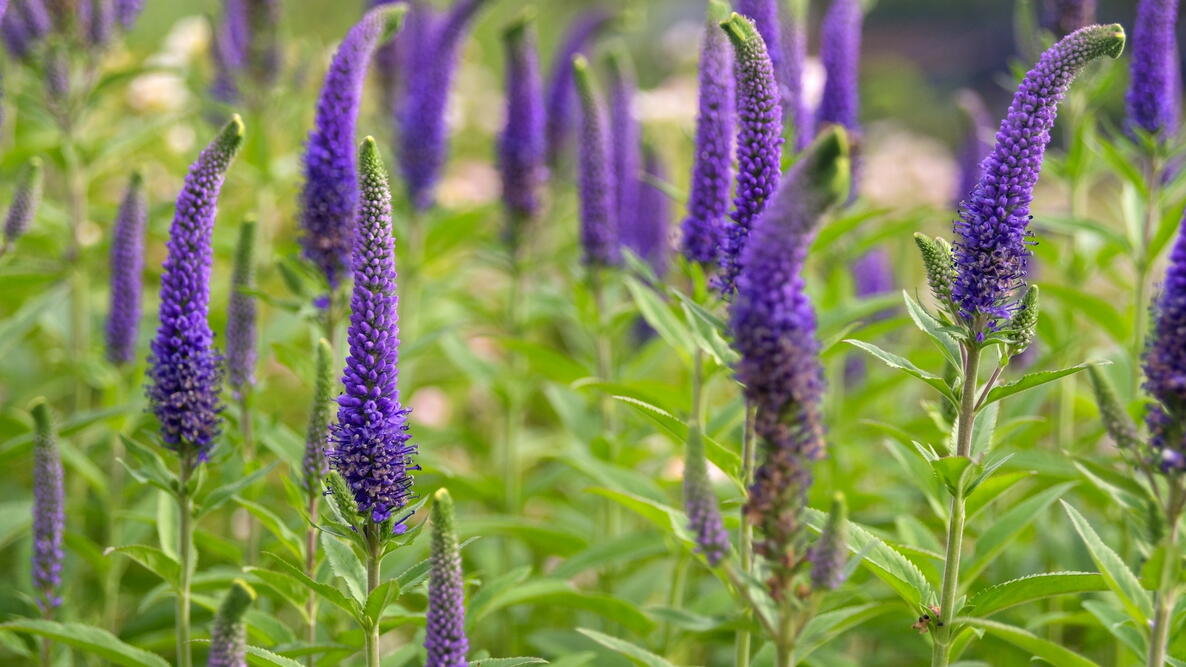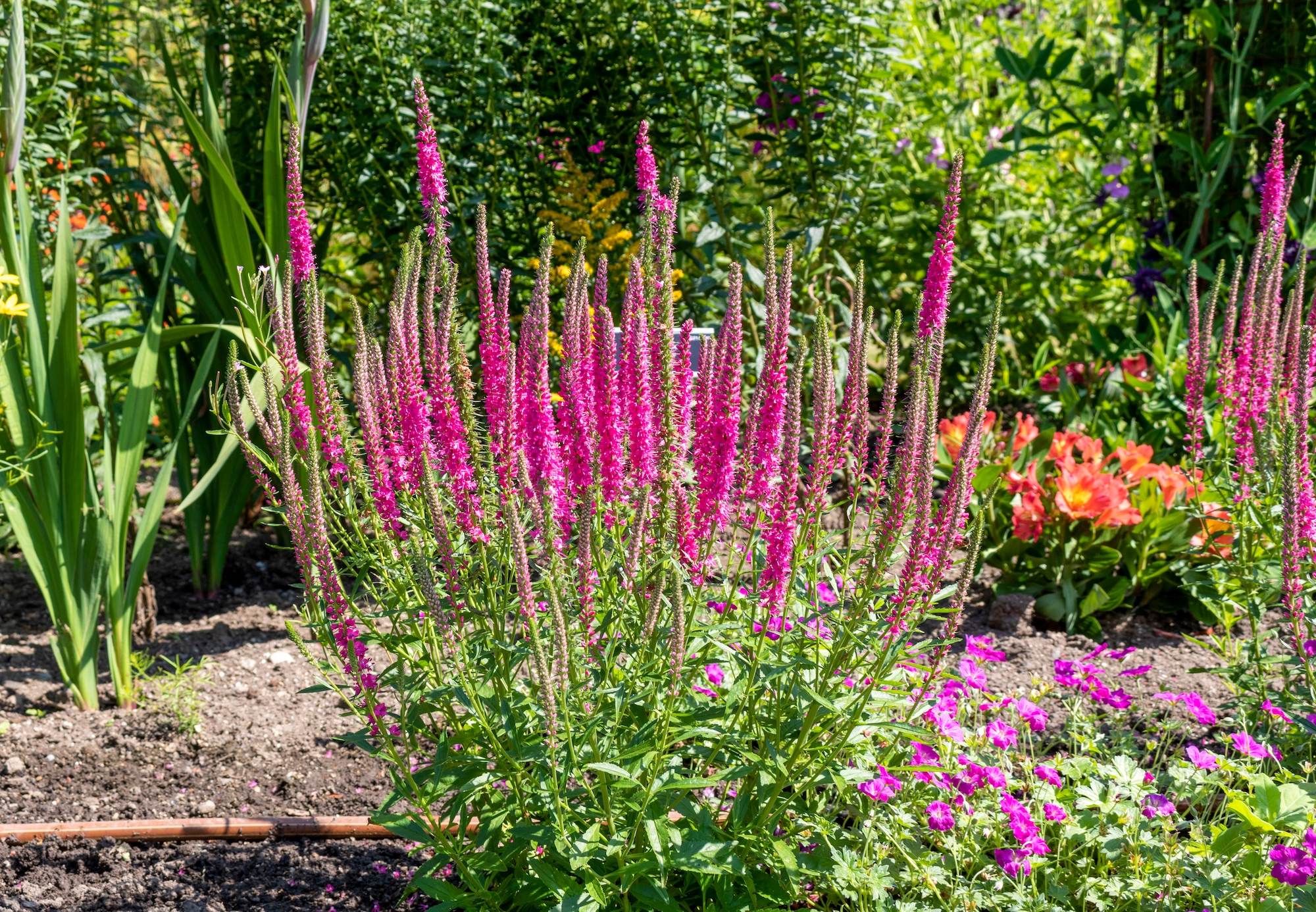
Planting, Growing, and Caring for Veronicas
Read Next
Types
- ‘Crater Lake Blue’ (V. austriaca) is a mat-forming perennial that grows 12 to 18 inches tall with beautiful, deep, gentian blue flowers in early summer. Hardy in USDA zones 4-8. Great for mass plantings.
- ‘Sunny Border Blue’ (V. spicata) is a clump-forming perennial with erect spikes of tubular, dark violet-blue flowers that reach 18-24 inches. This hybrid blooms from early summer to frost and makes excellent cut flowers.
- ‘Red Fox’ (V. spicata) has deep pink flowers on a narrow spike similar to ‘Sunny Border Blue’ but is a bit shorter, at about 12-16 inches. Hardy to USDA zones 3-8 for the northern gardener!

‘Dick’s Wine’ (V. prostrata) is a ground cover that grows to about 4-8 inches tall and produces an abundance of rose-wine–colored blooms—so many that they actually hide the dark-green foliage. Easily divided as they grow for quicker coverage. Drought tolerant once established and deer resistant.

Gardening Products
More Like This
Dahlias can be grown in containers. The dwarf or low-growing types are best for this use. Make sure your container is large enough--at least a cubic foot per tuber, or even larger for larger varieties. Place in full sun (8 to 10 hours). Keep soil slightly damp.
For more information about dahlias, visit:
http://www.almanac.com/plant/dahlias
To control size, perennials are usually divided into two or three plants. Divide in spring or late summer/early fall. According to the USDA, "In spring, divide plants just as new growth emerges. Most perennials divided in late summer/early fall (mid-August through September) should be mulched in November. A 4- to 6-inch layer of straw placed over the plants should reduce the possibility of winter injury. Remove the mulch in early April."
- « Previous
- 1
- 2
- …
- 10
- Next »











Comments